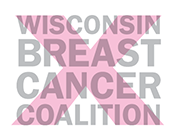The holiday decorations are all down and packed away (mostly . . .) and this time of year we tend to think about fresh starts. Have you been considering some shelf cleaning and organizing to start this new year out right? Maybe you have lots of bottles of cleaning supplies and cosmetics with dregs hanging around in the bottom and it’s time to replace them?
For more than a decade, WBCC has had a keen interest in, and has participated in research about, environmental links to increased breast cancer risk. We thought it’d be a good time to share some resources to help us not only get our shelves sorted out, but to make sure they’re safer this year.
WHY WORRY?
Here’s what we’ve learned:
- Only a small percentage of breast cancer can be attributed to genetic or family history.
- It is believed that approximately 75% of breast cancer cases may be caused by modifiable factors – including exposure to chemicals in our environment. That includes everything we breathe, consume, and put on our bodies.
- Earlier puberty and later menopause increase risk for breast cancer later in life.
- Girls are reaching puberty at younger ages.
- Multiple studies confirm that certain chemicals affect breast development in ways that may increase risk for breast cancer.
- We are learning about the importance of the TIMING of exposures and the effects they have on the progression of breast development and puberty.
For all women – including prepubertal girls – avoiding chemicals that are known to disrupt the endocrine system could help reduce risk of developing cancer.
HOW DO I KNOW WHAT TO AVOID?
Here are two excellent, easy to use resources.
The Silent Spring Institute has been doing research on breast cancer and the environment for decades. They have a downloadable app called Detox Me that is an easy to use resource right on your phone or computer. Choose a category like “Home” and it takes you to a guide with tips and information for your home and garden. Example: “Choose a quick drying cloth like nylon instead of vinyl shower curtains.” And then it tells you why: their testing found some of the highest concentrations of hormone disrupting phthalates in vinyl products. These chemicals leach into the air and hang around as dust (giving you a SECOND opportunity to inhale it!). If something has that “new plastic” smell, it likely has a high concentration of phthalates.
The Environmental Working Group has over 130,000 ratings on personal care, cleaning and food products in its searchable database. Their Healthy Living app is a breeze to use on your phone. It features a bar code scanner that you can use right in the store to learn more about the safety of the product you’re considering (or already own). You can also browse by category: shampoos, sunscreens, laundry detergents etc. Products are rated as low, moderate or high hazard based on the level of concern over exposure to the ingredients in the product. Ingredients of concern are also broken out if you want to dig more deeply.
You can use those ratings in a way that makes sense for you and your lifestyle once you see the levels of concern. It isn’t reasonable to expect everybody to only use products rated as “low hazard.” Cost or accessibility factors are different for everyone. But you CAN choose what works for you.
For instance, a body lotion, shampoo or soap that has “high hazard” rating might be something to switch out since it’s a product that winds up all over you – meaning more exposure. But, in my case for instance, I won’t give up my mascara no matter that it has a “moderate hazard” rating. That’s my trade off. The same process applies to cleaning supplies. Again, you can make decisions based on what works for you and your family.
EWG also has their own certification status for products that meet their highest safety standards. You can go right to that for a list of safest options for everything from nail products to floor care or look for the EWG Verified logo on products.
THE BREAST CANCER AND THE ENVIRONMENT RESEARCH PROGRAM (BCERP)
From 2010-2015, WBCC was a research partner, through the UW-Madison Carbone Cancer Center, for this important nationally funded research program. The focus of the program was looking “upstream” for environmental factors that could be triggers for breast cancer development. A unique and key thing about BCERP was its focus on “Windows of Susceptibility.” These are times of high cellular activity – prenatally, during puberty, pregnancy and menopause. Harmful exposures during these times can be like throwing a monkey wrench in the works. Hormones are circulating, cells are dividing – there’s a lot of communication going on both within and between those cells. If you introduce something that shouldn’t be there, trouble can start. It may take years to see the outcome, because cancer can take a long time to develop after the cellular damage is done. So, it makes sense to take precautions earlier rather than later.
You can read much more about BCERP on our website, including summaries of findings presented at conferences, and find resource materials for parents/caregivers on the program’s website.
The point to remember is that as we’re cleaning out closets and drawers, we do have resources available to us to help choose products considered “safer”. So download those apps and start shopping and restocking your shelves! Cheers to a healthy New Year!

 by
by